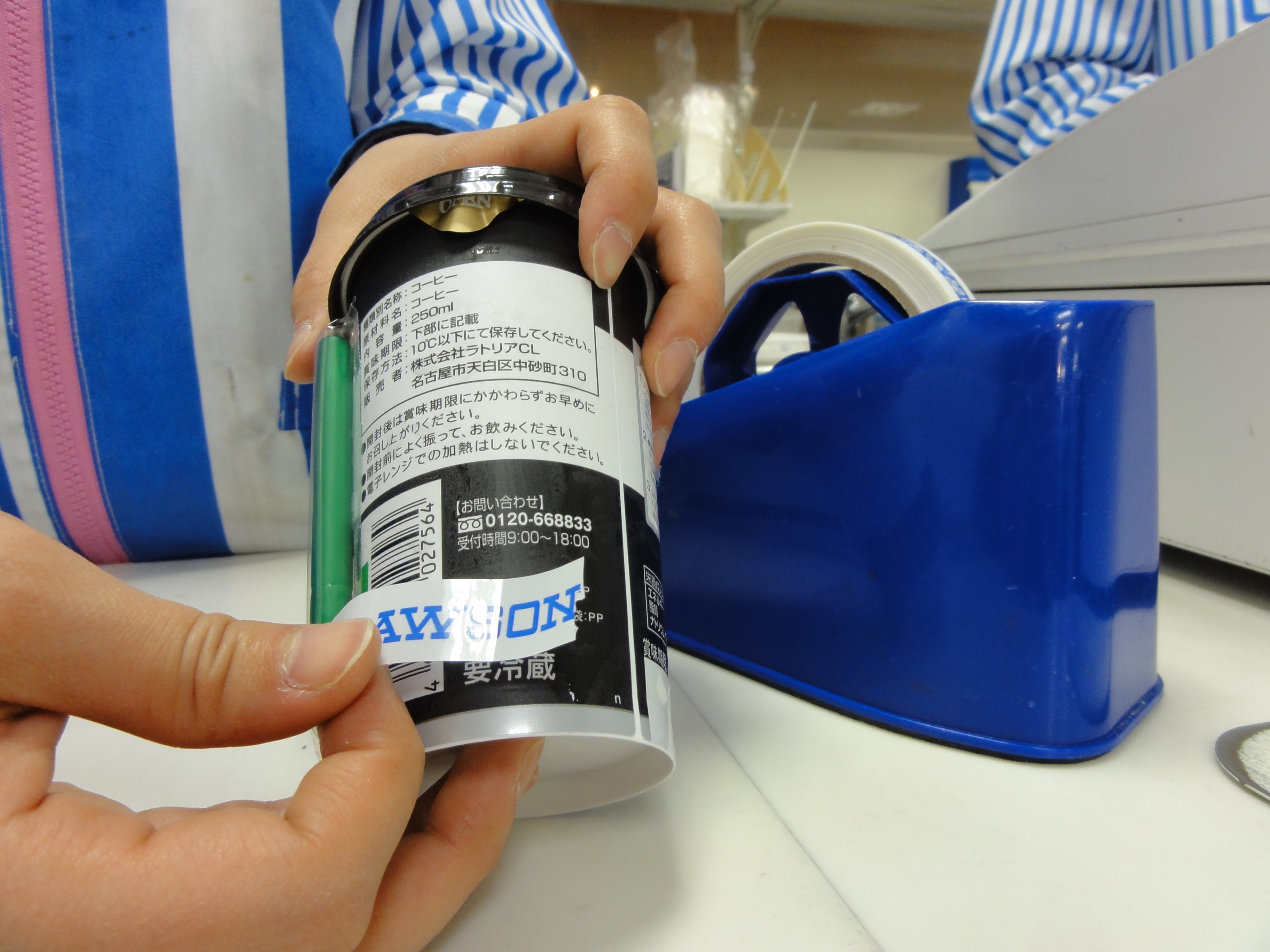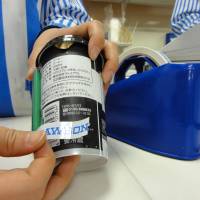Dear Alice,
I find the amount of unnecessary packaging in Japan shocking, and in an effort to live light on the Earth, I take my own bag with me whenever I go shopping. Yet, when I decline a bag at the register, the clerk will say something like, "Ok, then let me apply some tape," and without waiting for my consent, slaps a piece of opaque tape across the bar code. So, what the heck is that? I've already got a receipt as proof I paid. The last thing I want is more plastic with my purchase, yet if I try to refuse the clerk will often insist. Am I the only one who thinks this is totally weird and wasteful?
Janet E., Shizuoka
Dear Janet,
This turned out to be quite a sticky question, first and foremost because no one seems to know what the tape is called, and without a name, I can't do the research. I tried canvassing the stores in my neighborhood, all of whom keep large rolls of the pressure-sensitive tape at every register. At best, I got guesses. At worst, blank looks. "Maybe kaikei-zumi tēpu?" the manager of my local drug store tried. That means "checkout-completed tape," and is an accurate description of how it's used, but the term didn't yield meaningful hits when I tried it in Internet searches.
Feeling stuck, I finally took your question to the Tokyo headquarters of Lawson, Inc., a major convenience-store operator. With more than 11,000 stores in Japan alone, I figured they'd be a big user of this sort of tape, and indeed they are. Kazuo Kimura, Lawson's senior manager for public relations, told me the general industry term for the tape is "juryō-zumi tēpu," which can probably be translated as "payment-received tape." But "juryō" is a very direct word, and doesn't carry any nuance of gratitude, so at Lawson stores the tape is called "o-kaiage tēpu." It's hard to put that into English without producing something completely silly-sounding, like "tape signifying that we have humbly received payment for your honorable purchase," but that's pretty much the gist of it.
In any case, this sort of tape first appeared during the supermarket boom in the 1970s. "Supermarkets were quite a phenomenon then, because large-scale, self-service stores were a new concept in Japan," Kimura explained. "Customers would come shopping with the whole family, and spend a lot of time in the store."
Inevitably, young children would see something they had to have immediately, and make a big fuss. So the parents would take the item to the register, pay for it, and then let the child walk around with it while the family continued shopping. This may have stopped tantrums, but it was difficult for store staff to know if the item under consumption had been paid for, and awkward for the customers, who worried about being challenged, especially in a public place.
The solution supermarkets hit upon was to apply a piece of tape, imprinted with the store name or some other distinctive mark, to indicate that payment had been received specifically in that store.
"At first, this system was only used for children," Kimura explained. "Adults, after all, could produce a receipt to prove they had paid for something. But customers don't always take their receipts, and receipts in those days weren't as detailed as they are now. So there became a tendency to put every purchase, no matter how small, into a store bag. Now, if a customer doesn't want a bag, it's standard practice at most retailers to apply a piece of tape."
This got me wondering whether the incidence in Japan of nonpayment, deliberate or not, really warrants the cost and effort of applying all that tape. A quick check of National Police Agency statistics revealed that manbiki (shoplifting) is indeed a problem, and it costs retailers plenty. After rising steadily from 1992 until around 2004, the number of reported cases of shoplifting has been holding steady in the range of about 140,000 incidents a year. Although the number of juvenile shoplifters has dropped along with the number of young people in Japan, there has been an increase in elderly shoplifters.
Still, the tape strikes me as an imperfect system for shoplifting prevention. In one widely publicized case, a 71-year-old man purchased a cheap pair of work gloves at a home-improvement store, then removed the "paid" tape and applied it to an expensive gas burner, which he carried out of the store without paying for. He got caught only later, when trying to resell what he stole.
For the record, you are definitely not the only one who dislikes getting taped, as I discovered by checking out the many Internet forums where people register their complaints to the world at large. On one site, Onayami Keijiban ("The Bulletin-Board for Your Troubles"), a 45-year-old man griped about clerks who automatically apply tape to single-item purchases. "Sure, they ask, 'Just tape?' But only after they've already stuck it on," he complained. "I've got a receipt; why do I need tape too? Are they taking the stance that their customers can't be trusted?"
The man's gripe was highly viewed and generated a fair number of responses. About half were supportive; the other half thought he was making too much of a little piece of plastic. One woman offered that she herself would much rather have tape than not. "I couldn't bear to have anyone suspect me of shoplifting," she wrote. "So rather than taking offense at the tape, I see it as the store showing consideration for the customer."
"Japanese people dislike being thought of as having done something wrong," Kimura told me. "And they also dislike getting into conflicts caused by possibly accusing someone wrongly. People tend to think the tape is to prevent shoplifting, or to reduce the use of plastic bags, but at its most fundamental level, it's a way of avoiding conflict."



















With your current subscription plan you can comment on stories. However, before writing your first comment, please create a display name in the Profile section of your subscriber account page.